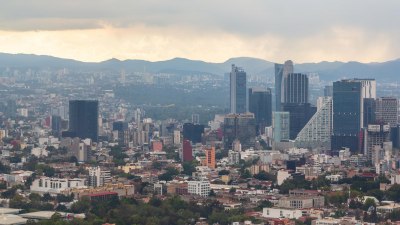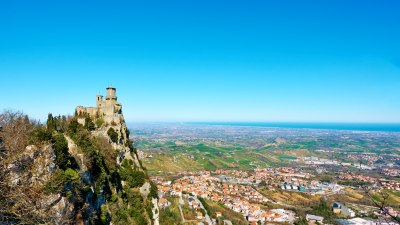The Monument to the Discoveries in Portugal Wonders What It Helped Discover
Explore the history and significance of the Monument to the Discoveries in Portugal and what it symbolizes.

Image created with Flux Schnell
The Monument to the Discoveries, or Padrão dos Descobrimentos, is a prominent landmark located on the northern bank of the Tagus River in Lisbon, Portugal. This impressive structure was erected to celebrate the Portuguese Age of Discovery during the 15th and 16th centuries, a remarkable period that saw Portugal emerge as a leading maritime power. The monument serves as a tribute to the explorers, navigators, and figures who played pivotal roles in linking Europe to Africa, Asia, and the Americas, revolutionizing global trade and cultural exchanges.
Designed by architect José Ângelo Cottinelli Telmo and sculptor Leopoldo de Almeida, the monument was inaugurated in 1960 to mark the 500th anniversary of the death of Prince Henry the Navigator, a key figure in the expeditions that charted unknown territories. The structure is designed in the shape of a ship's prow, with a collection of statues depicting various historical figures who contributed to Portugal's exploration endeavors. Among these figures are explorers like Vasco da Gama, Afonso de Albuquerque, and Fernando Magalhães (Ferdinand Magellan), along with other notable individuals such as cartographers and scientists.
The monument stands at an impressive height of 52 meters, making it a stunning sight against the backdrop of the river and the surrounding landscape. Visitors can ascend to the top of the monument, where they are rewarded with panoramic views of Lisbon and the river. This experience not only allows visitors to appreciate the architectural grandeur of the monument but also offers a unique perspective on the historical significance of the events it commemorates.
The significance of the Padrão dos Descobrimentos extends beyond its physical presence. It serves as a reminder of the maritime innovations that marked the era, including advancements in navigation techniques, shipbuilding, and cartography. These developments enabled the Portuguese to explore uncharted waters and establish trade routes that would eventually connect continents and cultures.
The Age of Discovery was marked by exploration and colonization, resulting in both remarkable achievements and profound consequences. While the monument celebrates Portugal's contributions to global exploration, it also invites reflection on the complex legacy of colonization. The expeditions led to significant cultural exchanges, the introduction of new goods and ideas, and the spread of European influence across the globe. However, these accomplishments were often accompanied by exploitation, subjugation, and a lasting impact on indigenous populations.
The monument serves as a site of historical reflection, encouraging visitors to contemplate the duality of exploration: the spirit of discovery and the implications of imperialism. The legacy of the Age of Discovery remains a topic of debate and discussion, prompting historians and scholars to examine the impact of these explorations on modern globalization and intercultural interactions. As travelers ascend the monument and gaze out over the estuary, they can appreciate not only the beauty of their surroundings but also the profound historical narratives that have shaped both Portugal and the world.
The Architectural Design and Symbolism
Architecturally, the Padrão dos Descobrimentos is a blend of modernist elements and traditional Portuguese stylistic features. The exterior is adorned with intricate stone carvings that depict navigational instruments, royal shields, and symbolic representations of bravery and exploration. At the base of the monument, a large relief map of the world illustrates the various sea routes taken by Portuguese explorers, emphasizing the extent of their maritime endeavors.
The monument is designed to evoke the sense that it is sailing towards new horizons, mirroring the ambitious spirit of the navigators it honors. The towering figures of prominent explorers seem to reach out into the air, symbolizing their desire for discovery and adventure. Each statue is positioned to reflect that explorer's specific contributions, highlighting their unique roles in the expansion of Portuguese influence across the seas.
Surrounding the monument, the Praça de Comércio, a large public square, offers visitors a scenic location to relax, enjoy local cuisine, or shop while immersed in the rich history of the area. The square features a stunning archway, the Arco da Rua Augusta, which leads visitors into the heart of Baixa, Lisbon's downtown district. This setting enhances the monument's significance, as it stands in a location steeped in Portugal's maritime history.
Contemplating the Legacy of Exploration
The Monument to the Discoveries not only commemorates the remarkable achievements and innovations of Portuguese explorers but also provokes important conversations about the ethics of exploration. The Age of Discovery was not solely about the pursuit of knowledge; it often involved significant suffering for indigenous populations and other colonized societies. The wealth acquired through exploration often came at a great human cost, leading to the imposition of foreign cultures and systems upon those who lived in newly 'discovered' lands.
In recent years, Portugal and many other countries have taken steps to acknowledge the complexities of their colonial histories. The monument stands as a symbol of both pride and reflection, allowing visitors to engage critically with the past. This dual nature of exploration – its contributions to global trade, cultural interaction, and, conversely, its often violent impact on indigenous communities – invites dialogue about the narratives we craft about our historical figures and events.
Visiting the Monument Today
Today, the Padrão dos Descobrimentos remains one of Lisbon's most visited tourist attractions, drawing thousands of visitors each year. Those who venture to the monument can engage with interactive exhibits that explore the history of the Age of Discovery, the lives of the figures commemorated, and the broader context of global exploration. Guided tours are available to provide deeper insights into the stories behind each statue and the historical significance of the monument.
Visitor centers and exhibits help contextualize the monument within Portugal's history and invite audiences to think critically about the legacy of exploration. Exhibition programs often address contemporary issues related to globalization, migration, and cultural exchange, making it a dynamic space for learning and reflection.
A Space for Reflection and Discovery
The Monument to the Discoveries stands as a powerful embodiment of Portugal's maritime legacy, celebrating the courage and ambition of those who sought to discover new worlds. However, it also serves as a reminder of the complexities and moral dilemmas surrounding exploration and colonialism. By fostering conversations about these themes, the monument engages visitors in a critical exploration of not just the past, but also how it continues to inform our understanding of globalization and cultural interactions today.
As we visit this remarkable landmark, we are invited to reflect on the multifaceted nature of discovery. The stories engraved in stone and the vistas that unfold before us compel us to examine not only our shared history but also our collective future as we navigate the interconnected world shaped by those early explorers.











